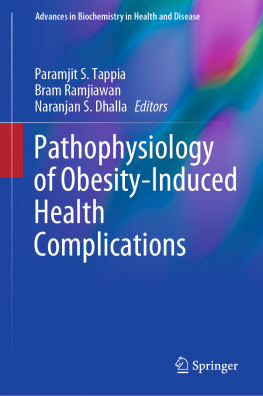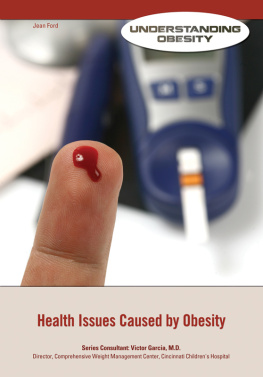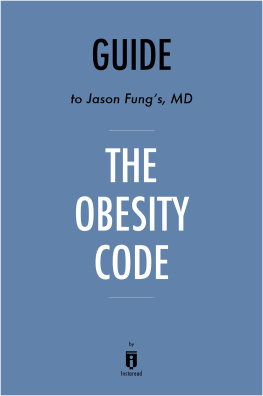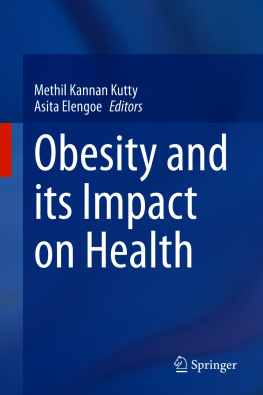Paramjit S. Tappia - Pathophysiology of Obesity-Induced Health Complications
Here you can read online Paramjit S. Tappia - Pathophysiology of Obesity-Induced Health Complications full text of the book (entire story) in english for free. Download pdf and epub, get meaning, cover and reviews about this ebook. year: 2020, publisher: Springer International Publishing, genre: Science. Description of the work, (preface) as well as reviews are available. Best literature library LitArk.com created for fans of good reading and offers a wide selection of genres:
Romance novel
Science fiction
Adventure
Detective
Science
History
Home and family
Prose
Art
Politics
Computer
Non-fiction
Religion
Business
Children
Humor
Choose a favorite category and find really read worthwhile books. Enjoy immersion in the world of imagination, feel the emotions of the characters or learn something new for yourself, make an fascinating discovery.
- Book:Pathophysiology of Obesity-Induced Health Complications
- Author:
- Publisher:Springer International Publishing
- Genre:
- Year:2020
- Rating:4 / 5
- Favourites:Add to favourites
- Your mark:
- 80
- 1
- 2
- 3
- 4
- 5
Pathophysiology of Obesity-Induced Health Complications: summary, description and annotation
We offer to read an annotation, description, summary or preface (depends on what the author of the book "Pathophysiology of Obesity-Induced Health Complications" wrote himself). If you haven't found the necessary information about the book — write in the comments, we will try to find it.
Pathophysiology of Obesity-Induced Health Complications — read online for free the complete book (whole text) full work
Below is the text of the book, divided by pages. System saving the place of the last page read, allows you to conveniently read the book "Pathophysiology of Obesity-Induced Health Complications" online for free, without having to search again every time where you left off. Put a bookmark, and you can go to the page where you finished reading at any time.
Font size:
Interval:
Bookmark:
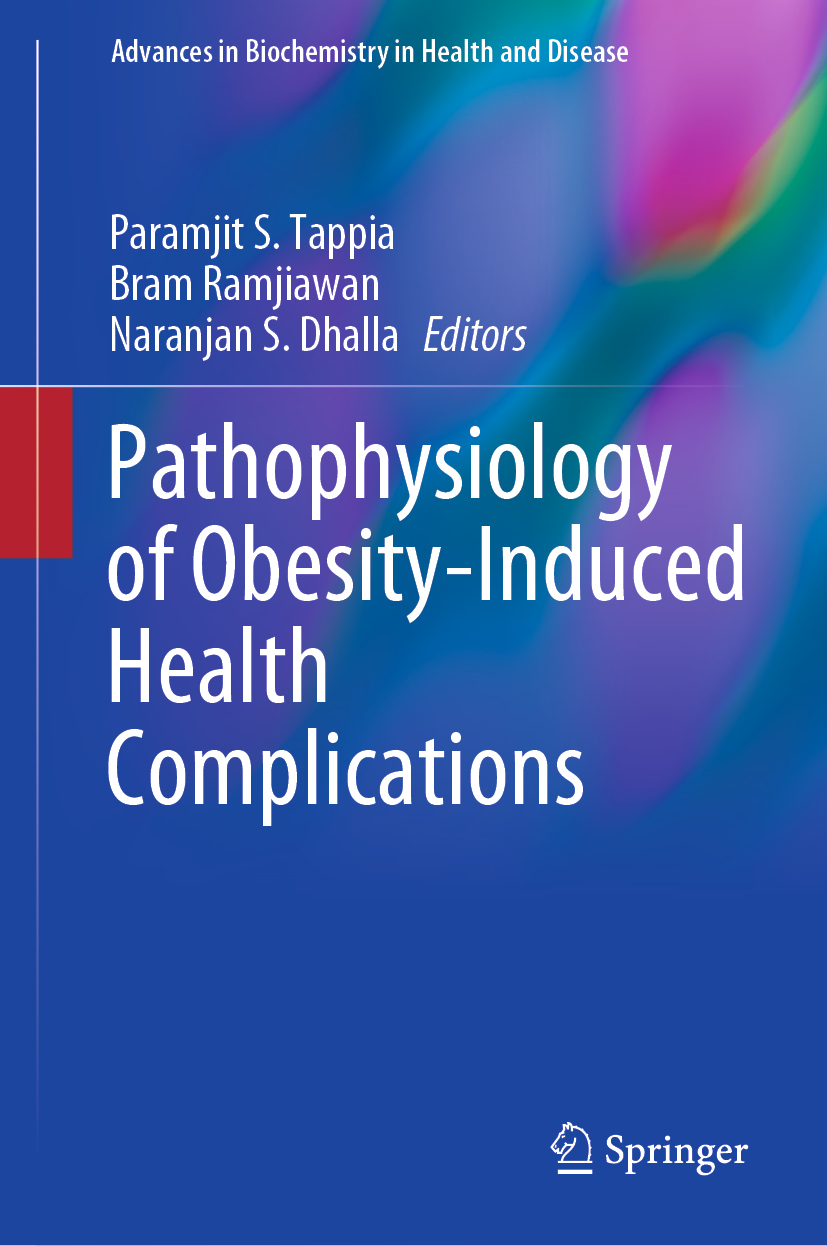
Advances in Biochemistry in Health and Disease focus on the latest developments in biochemical research with implications for health and disease. This book series consists of original edited volumes and monographs, presented by leading experts in the field and provides an up to date and unique source of information for all those interested in the fundamental, biochemical processes of the latest and emerging topics and techniques.
Covering a wide variety of topics, this book series is a valuable source of information from those at the lab bench through to the Health Care workers.
More information about this series at http://www.springer.com/series/7064

This Springer imprint is published by the registered company Springer Nature Switzerland AG
The registered company address is: Gewerbestrasse 11, 6330 Cham, Switzerland
Overweight and obesity are defined as abnormal or excessive fat accumulation that may impair health. Although obesity is preventable, according to the World Health Organization the global incidence of obesity has alarmingly nearly tripled since 1975. It is a global epidemic. Indeed, in 2016, more than 1.9 billion adults were overweight and 650 million of those were obese. The fundamental cause of obesity and overweight is an imbalance between caloric intake and expenditure. It is evident that the global trend has been moving towards an increased intake of energy-dense foods that are high in fat, coupled with a decrease of physical activity due to the increasingly sedentary lifestyles of the general population.
The risk of occurrence of obesity-induced health complications increases exponentially as body mass index increases. Accordingly, this book has compiled comprehensive information and new insights into the biochemistry and pathophysiology of the increase in the risk of obesity-associated non-communicable diseasesmany of which increase the risk for premature death or can lead to serious chronic conditions that reduce the quality of life.
This book brings together an outline of the link between obesity and the onset of many adverse health conditions including diabetes (metabolic dysregulation), cardiovascular disease, mental health disorders, cancers, sleep disorders, liver and kidney disease and musculoskeletal disorders. The development of these diseases may be consequences of obesity-induced changes in cellular functioning in response to a pro-inflammatory environment, endocrine/metabolic dysfunction, activation of the autonomic nervous system, oxidative stress and impairment of several signal transduction pathways. Furthermore, we dedicate a section on some preventative strategies to combat obesity and related health complications.
While the major focus of this book is on the health consequences of obesity in adulthood, this book will also highlight the increase in obesity prevalence among children. This is of a major public health concern as obesity-related diseases not previously seen in children and adolescents are now of common occurrence.
The contributors to this book are international leading experts on obesity and associated health complications and highly knowledgeable within their respective areas of investigation. This book is also uniquely positioned to provide comprehensive perspectives on the biochemistry and pathophysiology of the effects of obesity. There are 19 chapters in 4 different parts in this book, comprising of Part I: General Aspects of Obesity and Health Complications (3 chapters); Part II: Metabolic Disturbances and Inflammation due to Obesity (5 chapters); Part III: Neurological and Visceral Complications due to Obesity (7 chapters) and Part IV; Strategies for the Prevention of Obesity-Induced Complications (4 chapters). Each section underscores the multifactorial nature of co-morbid conditions and complications.
A key intent of this volume is also to highlight the compendium of adverse consequences of obesity to human health and to provide current understanding of the cellular and biochemical mechanisms of obesity-induced health complications that will be of value not only to healthcare professionals, but will stimulate and motivate biomedical researchers and scientists to discover ways to prevent the epidemic of obesity and associated adverse health outcomes. Furthermore, this book will serve as a highly useful multidisciplinary resource for medical students, fellows, residents, and graduate students.
In summary, this monograph covers a broad range of topics related to the mechanisms of obesity-induced health complications. We hope that readers will understand and appreciate that obesity is significantly linked to increased risk and occurrence of lethal and non-lethal diseases and complications. Furthermore, the underlying message presented in the monograph is that the cause of obesity-related disorders is multifactorial and understanding the complexity and the full spectrum of the mechanisms involved may contribute to the development of novel interventions for the prevention and treatment of Obesity associated co-morbidities.
Font size:
Interval:
Bookmark:
Similar books «Pathophysiology of Obesity-Induced Health Complications»
Look at similar books to Pathophysiology of Obesity-Induced Health Complications. We have selected literature similar in name and meaning in the hope of providing readers with more options to find new, interesting, not yet read works.
Discussion, reviews of the book Pathophysiology of Obesity-Induced Health Complications and just readers' own opinions. Leave your comments, write what you think about the work, its meaning or the main characters. Specify what exactly you liked and what you didn't like, and why you think so.

